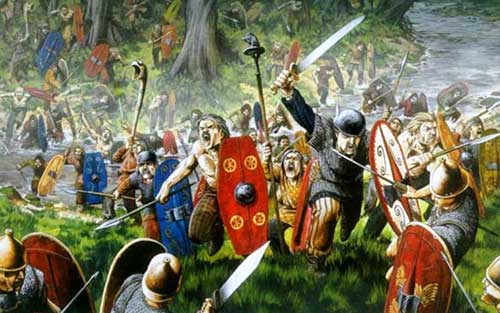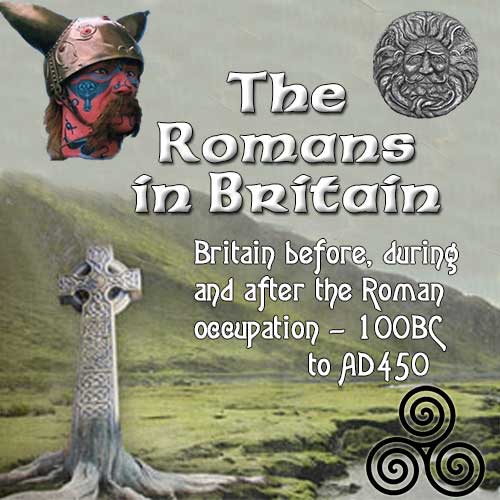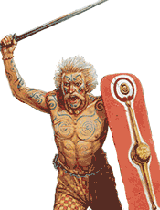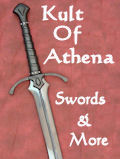The Basics of Celtic Life

Introduction
The period before the Romans arrived in Britain is clouded by incomplete facts, conjecture and conflicting opinions. This is mainly due to the lack of recorded information available. The Celtic tribes of Britain did commit their history in written form as the Celtic language did not have any written form, only oral.
The structure of the tribes was based on a belief that everyone had to serve a practical purpose within the community. Their main concerns were feeding the tribe and defending their territory. So such luxuries as scribes and writers to record their heritage were unknown. Coupled with the inefficiency of their ways of working, in particular agriculture, most of the tribal members were put to work on the farms, rasing crops and tending the livestock.
They had yet to learn about the equipment and techniques of the Romans, who had developed methods of using land, people and tools more effectively.
The Aylesford-Swarling culture
Partly because of the development of trade in the south, the Catuvellauni, Trinovantes and Cantiaci became more advanced and civilised than their northern compatriots. As such these tribes developed very similar societies, cultures, laws etc. For this reason these tribes have been labeled the Aylesford-Swarling culture. This name refers to two cemeteries found in Kent in 1890 and 1921.
These tribes had extremely similar ways of life. Their social structure, politics and beliefs were very much the same. Even such aspects as their burial of tribes people in graves and cremation were common to these tribes. The artefacts they produced, especially wheel made pottery, were comparable in style and manufacture. These tribes became more closely aligned sometime between 54BC and 43AD when the Catuvellauni became dominant over the others by asserting their authority over the present leaders. The Atrebates also came underneath influence of the Catuvellauni around the same period.
The Gallo-Belgic tribes
The Atrebates, Dobunni, Durotriges and Dumnonii tribes were of a similar society, in the same way the Aylesford-Swarling culture were to their tribes. The Belgae can be included in this list a tribe, but it is widely believed they were actually a subset of the Atrebates. The Parisi were also of Gallic origin, but as they occupied an area north of the Catuvellauni and Iceni, they cannot be considered part of this group of southern tribes.
These tribes developed similar lifestyles and artefacts in the same way the previously mentioned tribes had developed their cultures. The Atrebates had their origins in Gaul, but the others merely had Belgic traits akin to the Atrebates. Even so, the parallels between these tribes are too close to ignore. The territory occupied by the Atrebates changed over the years due to incursions by neighbouring tribes and mainly by the assertion of the Catuvellauni. Around 25BC, it appears the Catuvellauni took control of the Atrebates and actually took the Silchester area for their own people, possibly banishing the Atrebatian inhabitants to land outside this newly won region. We do know Calleva (Silchester) became a centre for the minting of coins depicting King Epaticus of the Catuvellauni.
One of the outstanding aspects of these tribes was their pottery, or rather ceramics. These were noted for the beaded rims, tall necks and wide mouths of their jars. Later in the first century A.D., these products were supplemented by copies of Gaulish beakers and cups.































